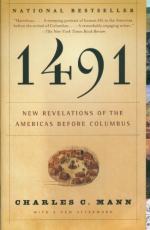|
This section contains 738 words (approx. 2 pages at 400 words per page) |

|
Summary
In March, 1662, a delegation of Native Americans met with foreigners who had recently overtaken an abandoned Indian settlement in what is now southern New England. The group was led by Massasoit of the Wampanoag tribe. Massasoit feared that the tribe’s arch enemy, the Narragansett tribe, would take over their territory. The Wampanoag had learned to deal and trade with the interlopers. He agreed to allow the British to stay ashore as long as they wanted if they allied with them against the Narragansett. It was an important historic event. The Brits called their colony Plymouth. Tisquantum, an interpreter, was credited with teaching the colonists how to plant corn. He moved into the Brits’ settlement and spent the rest of his days there. Through his planting and fertilizing expertise, the Brits did not starve.
For centuries, the Indians were seen as...
(read more from the Chapter 2: Why Billington Survived Summary)
|
This section contains 738 words (approx. 2 pages at 400 words per page) |

|




